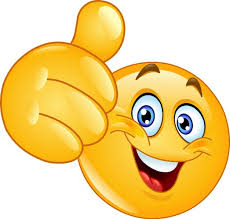The Thumbs Up Emoji: A Friendly Gesture in Digital Conversation
Ever found yourself in the middle of a text conversation, unsure of how to express approval or agreement? Enter the thumbs up emoji! This small but mighty symbol has become a staple in our digital conversations, serving as a universal gesture of positivity and affirmation. But have you ever wondered why this tiny image packs such a punch? Let’s dive into the world of the thumbs up emoji and explore why it has earned a special place in our online interactions.visit there
Table of Contents
ToggleWhat’s Behind the Thumbs Up Emoji?
The thumbs up emoji, often depicted as a hand with the thumb extended upward, is more than just a casual way to say “yes” or “good job.” Its origins can be traced back to ancient times, where the gesture was used in various cultures to indicate approval or agreement. The modern digital version, however, has its roots in the early days of internet communication.
In the 1980s, when emoticons like 🙂 and 🙁 were first making their appearance, the thumbs up emoji was introduced as part of the Unicode standard. This allowed it to be used consistently across different platforms and devices. Since then, its popularity has skyrocketed, becoming a go-to symbol in everything from text messages to social media posts.
Why Do We Love the Thumbs Up Emoji?
So, what makes the thumbs up emoji so universally appealing? For one, its simplicity is key. In a world where communication is often rushed and brief, the thumbs up emoji provides a quick and clear way to convey approval. It’s a small gesture that packs a big punch, making it perfect for our fast-paced digital interactions.
Moreover, the thumbs up emoji is versatile. It can be used in a variety of contexts, from congratulating a friend on a job well done to signaling agreement with a statement. Its adaptability means that it fits seamlessly into almost any conversation, adding a touch of positivity and encouragement.
How the Thumbs Up Emoji Enhances Communication
One of the main advantages of the thumbs up emoji is its ability to bridge gaps in communication. Sometimes, words alone can’t fully convey our emotions or intentions. In these cases, a thumbs up emoji can provide clarity and context.
For example, imagine you’re coordinating plans with friends. You might say, “Let’s meet at 7 PM.” A simple thumbs up emoji in response can indicate that everyone is on board without the need for a lengthy confirmation. It’s a quick, efficient way to ensure that everyone is aligned, reducing the chances of miscommunication.
The Thumbs Up Emoji in Different Cultures
While the thumbs up emoji is widely recognized and used around the world, its meaning can vary depending on cultural context. In many Western cultures, the thumbs up is a positive gesture that signifies approval or success. However, in some regions, it can have different connotations.
For instance, in parts of the Middle East, the thumbs up gesture can be interpreted as a rude or offensive sign. This cultural variation highlights the importance of understanding local customs and practices when using emojis in international communication.
The Thumbs Up Emoji in Business Communication
In the professional world, the thumbs up emoji has become a handy tool for maintaining a positive tone in digital correspondence. Whether you’re giving feedback, acknowledging receipt of a document, or simply offering encouragement, the thumbs up emoji can help convey a supportive and approachable attitude.
However, it’s important to use the thumbs up emoji appropriately in business settings. While it can be a great way to show enthusiasm and agreement, it’s best used in informal or semi-formal contexts. For more formal communications, a well-crafted written response may be more suitable.
The Evolution of Emoji Use
The thumbs up emoji is just one example of how emojis have evolved and become an integral part of our digital communication. From their humble beginnings as simple text-based symbols to their current status as a rich and varied visual language, emojis have transformed the way we express ourselves online.
Over time, emojis have become more diverse and inclusive, reflecting a wider range of emotions, identities, and experiences. The thumbs up emoji, while remaining a classic, is part of this broader trend toward more nuanced and expressive digital communication.
The Future of the Thumbs Up Emoji
As technology continues to advance, the thumbs up emoji is likely to evolve as well. New versions and variations may be introduced to reflect changing cultural norms and preferences. Additionally, as more platforms and devices adopt new features, the thumbs up emoji may gain new functionalities, enhancing its role in digital interactions.
In the future, we might see even more creative uses of the thumbs up emoji, perhaps incorporating augmented reality or other emerging technologies. One thing is certain: this small symbol is likely to remain a beloved part of our digital communication toolkit for years to come.visit here
Conclusion: The Thumbs Up Emoji in Our Digital Lives
The thumbs up emoji is more than just a small graphic on your screen. It’s a powerful tool for expressing approval, agreement, and positivity in our digital conversations. Its simplicity and versatility make it a go-to choice for people around the world, enhancing communication and adding a touch of encouragement to our interactions.
As we continue to navigate the ever-evolving landscape of digital communication, the thumbs up emoji will undoubtedly remain a staple. Whether you’re celebrating a victory, giving a quick nod of agreement, or simply spreading some good vibes, this little symbol is sure to keep playing a key role in our online exchanges.
So next time you hit send on a message, consider adding a thumbs up emoji. It’s a small gesture that speaks volumes, showing that you’re engaged, supportive, and ready to keep the positive conversation going.back to home

